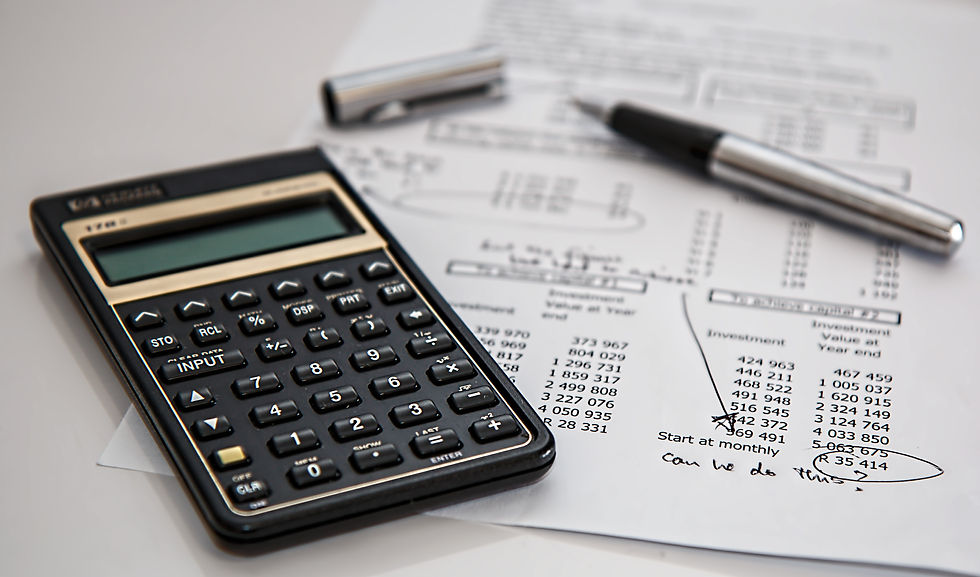Personal Loan vs. Personal Line of Credit: Understanding the Difference
- Guest Post
- Apr 17, 2024
- 4 min read
In personal finance, people frequently need extra money to address various costs, such as debt consolidation, unforeseen medical expenses, or home remodeling. Personal lines of credit and personal loans are two popular ways to obtain these funds. Although they both aim to provide financial flexibility, they function differently and are appropriate for various financial situations and demands.

What is a Personal Loan?
A personal loan is a one-time payment borrowed from a bank, credit union, or internet lender by an individual. It is paid back in equal monthly amounts over a predetermined period, typically one to seven years. While secured loans are also a possibility, most personal loans are unsecured, meaning they don't need collateral. Personal loan interest rates can be either fixed or variable, based on the borrower's creditworthiness and the lender.
Personal loan borrowers benefit from predictability and structure. They know precisely how much they must repay each month and when the loan will be paid off in full. This qualifies them for one-time, clearly defined costs like financing a wedding or buying a car. Furthermore, the majority of personal loans are paid back in one lump sum, giving the borrower instant access to the whole loan amount.
Understanding Personal Lines of Credit
Conversely, a personal line of credit operates more in line with a revolving credit account. Borrowers can take out as much money as needed from a pre-established credit limit that is made available to them. In line with credit cards, debtors only pay interest on the portion of their credit limit that is actually used. Secured and unsecured personal lines of credit are available, with the latter being more typical.
One of a personal line of credit's main benefits is its flexibility. When they need money, borrowers can access it without having to apply for a new loan every time. This makes it perfect for recurring or unforeseen costs like house repairs or medical bills.
Differences in Terms and Repayment
It's crucial to take into account the variations in terms and repayment alternatives between personal lines of credit and loans. Because personal loans have set repayment terms, borrowers are required to follow a prearranged repayment plan. Although it offers structure and clarity, not everyone will find this ideal, particularly if their costs are erratic or their income is variable.
Conversely, personal credit lines provide greater repayment flexibility. Like with a credit card, borrowers can choose to make minimal monthly payments or repay the entire amount borrowed. This can benefit those who would rather manage their cash flow more dynamically or who have different monthly financial needs.
Interest Rates and Costs
The fees and interest rates related to personal loans and credit lines are also important factors to take into account. Generally speaking, personal loans have set interest rates that don't change throughout the loan. Because they are aware of the precise amount of interest they will pay during the loan's term, this gives borrowers stability and predictability.
Conversely, personal credit lines frequently have variable interest rates linked to a benchmark rate, like the prime rate. While reduced interest rates can initially benefit borrowers, rates can rise over time and result in greater borrowing expenses. Furthermore, expenses associated with personal lines of credit, such as yearly or withdrawal fees, can increase the overall cost of borrowing.
Credit Score Requirements
Personal loans and personal lines of credit can have different credit score restrictions. Due to the fact that personal loans are sometimes unsecured and are determined primarily by the borrower's creditworthiness, they frequently have tougher credit score criteria. The best loan terms and the lowest interest rates are usually available to borrowers with great credit ratings.
Borrowers with different credit profiles can find it easier to obtain personal lines of credit because assets like savings accounts or home equity might back them. This can enable those with bad credit or no credit history to consider them as a feasible choice. However, debtors need to be informed that having a lower credit score could lead to higher interest rates or lower credit limits.
Decision-Making Factors
A number of things should be taken into account while choosing between a personal loan and a personal line of credit. First, think about why the money is needed and if it will be used for a one-time or recurrent expense. While personal lines of credit provide flexibility for variable or unpredictable spending, personal loans are best suited for fixed expenses with visible costs.
Evaluate your preferences for interest rates and repayment terms and your financial status. A personal loan can be a better choice if you value consistency, such as fixed monthly payments and predictable interest rates. But if you prefer flexibility and take out loans only, when necessary, a personal line of credit can be more in line with your financial objectives and way of life.
Conclusion
Personal lines of credit and personal loans both provide beneficial ways to obtain money for a range of purposes. Understanding how the two products differ is critical to making an educated choice that fits your goals, tastes, and financial condition. Consider your options carefully and select the one that best fits your unique situation, whether you want the freedom of a personal line of credit or the structured payback of a personal loan.
Related Content


